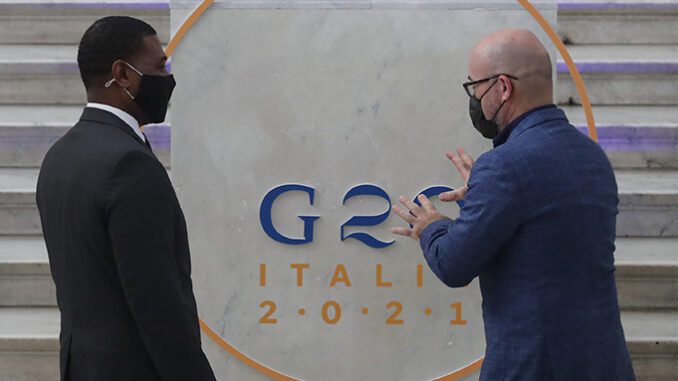
WASHINGTON, D.C. — In a major step, President Joe Biden is proposing a return to aggressive Obama-era vehicle mileage standards over five years. He’s then aiming for even tougher anti-pollution rules after that to forcefully reduce greenhouse gas emissions and nudge 40% of U.S. drivers into electric vehicles by decade’s end.
The proposed rules from the Environmental Protection Agency and Department of Transportation are expected to be released as early as next week, according to four industry and government officials who have been briefed on the plan.
They spoke on the condition of anonymity because the standards haven’t been finalized. But administration officials have been discussing the numbers with the auto industry.
Making good on a Biden promise during the presidential campaign, the regulatory action would tighten tailpipe emissions standards rolled back under President Donald Trump.
Acknowledging Biden’s goal of cutting U.S. greenhouse gas emissions by at least half by 2030, the rules would begin with the 2023 car model year and start by applying California’s 2019 framework agreement on emissions standards. The California deal increases the mileage standard and cuts greenhouse gas emissions by 3.7% per year.
Requirements ramp up in 2025 to Obama-era levels of a 5% annual increase in the mileage standard and a similar cut in emissions. They then go higher than that for model year 2026, one of the people said, perhaps in the range of 6% or 7%.
Neither EPA nor the Transportation Department would comment on the proposal.
The new standards go partway in meeting the demand from environmental groups, several of which were pushing for a quick return to at least the Obama-era standards.
In the proposed rule, the EPA is likely to make a nonbinding statement that the requirements will ramp up even faster starting in 2027, forcing the industry to sell more zero-emissions electric vehicles, the industry and government officials said. For now, the agency was seeking to ask that 40% of all new car sales to be electric vehicles by 2030, according to one of the officials.
The Biden administration defers for now in setting post-2026 mileage requirements, setting the stage for bigger fights ahead over the level of government effort needed to combat climate change against the future of the auto industry, which currently draws most of its profits from gas-powered SUV sales.
Delaware Sen. Tom Carper, who chairs the Senate Environment and Public Works Committee, has been urging tough rules that would ban sales of new gasoline-powered passenger vehicles by 2035.
Under Obama, automakers were required to raise fuel economy 5% per year from 2021 through 2026. But under Trump, that was reduced to 1.5% annually. In 2019, five automakers — Ford, BMW, Honda, Volkswagen and later Volvo — split with competitors and reached a deal with California to raise mileage by 3.7% per year.
Trump later repealed California’s legal authority to set its own standards, which the Biden administration is moving to restore.
It wasn’t clear whether the Biden administration would restore credits for selling electric vehicles, but that is likely since EVs are a cornerstone of its plan to fight climate change. Biden’s nearly $2 trillion infrastructure proposal includes 500,000 new charging stations for electric cars and trucks, and he has proposed tax credits and rebates to help spur sales.
Under the Obama-era standards, automakers got double credit for fully electric vehicles toward meeting their fuel economy and pollution requirements. That “multiplier” was removed in the Trump years.
Several automakers including GM have expressed a commitment to transition to all electric vehicle sales, though environmental groups are skeptical the companies will stick to their promises if consumers continue to favor gas-powered cars, which now cost less. Potentially easing the transition for automakers is a nearly trillion-dollar bipartisan Senate infrastructure bill that would help fund the half-million new electric charging stations around the country. An accompanying $3.5 trillion Senate spending bill backed by Democrats was expected to provide tax credits and other incentives for consumers to switch to electric vehicles.
Those measures are still pending in Congress.
Fully electric vehicles represent just 2% of new vehicle sales in the U.S., but analysts expect that to rise rapidly in coming years.
Earlier this year as negotiations were starting, a coalition of automakers told the Biden administration it would agree to raise mileage standards to reduce tailpipe emissions but with tradeoffs and at rates lower than those brokered by California and the five other automakers. The automakers would have agreed to stricter standards in exchange for the added credits for selling electric vehicles.




